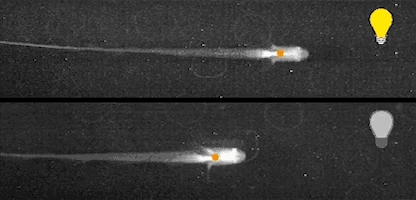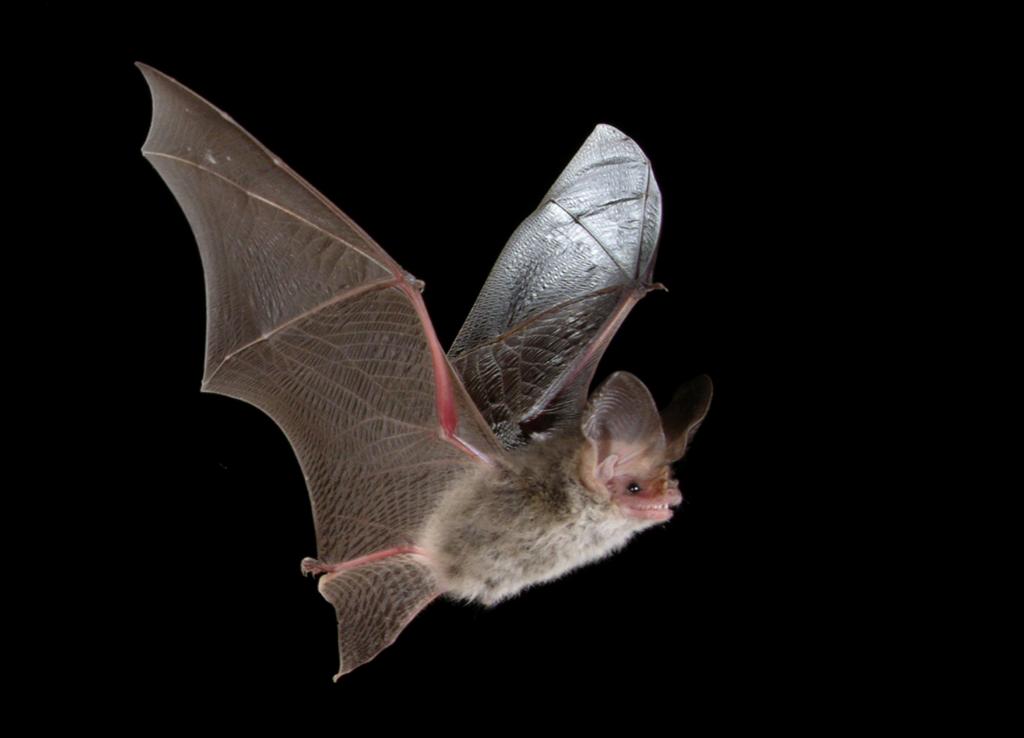Animals must constantly make the choice between using energy to gather information about their environment or to carry out goal-driven tasks. Animals use sensory input, including humans’ five senses and other senses like electromagnetics and echolocation, to make those decisions.
A new study published in Nature Machine Intelligence finds that all 11 species the research team investigated—ranging from amoebas to humans—demonstrate similar patterns of movement. These results have implications for robotics, because robots must be programmed to make the same kinds of decisions animals do to move safely and efficiently through unpredictable environments.
The research team ran experiments with glass knifefish, and then analyzed data available in the scientific literature on 10 other species: humans, mice, bats, moles, three butterflies, cockroaches, and two amoebas. Every single species demonstrated the same pattern of decision making, which involved turning the information-gathering mode, called “explore,” on and off depending on how uncertain the animals were about their environment.

The mathematical strategy that best represented the animals’ behavior “is the trace of a covariance matrix—which I don’t think the fish is actually computing,” jokes Kathleen Hoffman, professor of mathematics and statistics and an author on the new paper.
Robots, too, must constantly interpret the sensory input they’re receiving and use that information to make decisions. Understanding how real animals tackle that process, even if they don’t know themselves, is useful for robotics, Hoffman explains, “because the robot actually can compute the trace of a covariance matrix.”
Interdisciplinary innovation advances robotics
Specifically, the paper’s results showed that an animal explores until its certainty about its environment decreases below a given threshold. Then it switches to using that information for tasks, which is called “exploit” mode. When uncertainty rises again, it goes back to exploring. This kind of mode-switching is called “triggered excitation.” It differs from a model called “persistent excitation,” which involves constant exploring.
Applications involving sensory processing, like robots, often use the persistent excitation model, so the team was surprised to discover that persistent excitation is not consistent with their observations and analysis. The team’s findings could have a significant impact in the field of sensory modeling.
The work for this paper required many areas of expertise, and the team included researchers in mathematics, engineering, and biology. Debojyoti Biswas, a postdoctoral fellow at Johns Hopkins University, is the first author on the new paper, and the other authors include Hoffman and researchers at University of Minnesota, Cornell University, and the New Jersey Institute of Technology.
The project grew out of a conversation between Hoffman and John Guckenheimer, an emeritus professor of mathematics at Cornell. They invited the rest of the team members on board as their expertise was needed. From figuring out how to track the position of the knifefish in the experiments with extreme precision, to analyzing the data on other species, to interpreting the math in a way that made sense in a biological context, everyone had a role to play.
“This was one of the coolest interdisciplinary groups I’ve worked in,” Hoffman says. “I really don’t think that any one of us could have done it on our own.”

The remaining “head-scratcher”
The new paper has generated new questions as well as answers. “Here’s the head-scratcher,” Hoffman says: “What’s the mechanism that leads to this?” The team observed the same pattern in species as different as butterflies and moles, which use completely different senses. And they were able to deduce the pattern from published research that was originally undertaken to answer completely different questions.
Moving forward, some of the same team members, including Hoffman, plan to dig deeper into the mechanism behind this surprising pattern—and whether the mechanism is the same or different across species. “To me,” Hoffman says, “this is fundamental and really important.”
Hoffman is grateful to have been a part of the team. She took the opportunity to grow as a mathematician by contributing primarily to the project’s data analysis, when her focus is usually in mathematical modeling.
“I wanted to really push the limits of what I could do and make it broader. I wanted to develop skills that I didn’t have before,” she says. Overall, “I had fun. You never know what you’re going to be working on as an applied mathematician.”




